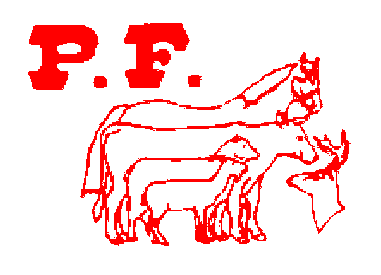Results of research conducted by Texas A&M University prove that PVM™ stimulates the efficiency of forage utilization. Most of our research was conducted on yearlings – the reason being, it is more difficult for a yearling to convert forage than a mature adult animal. The following is only a small portion of the article published in 1990 by W.C. Ellis, F.M. Rouquette and D.P. Hutchinson - Texas A&M University – College Station, Texas.
When grazing forage, and especially warm season pastures, growing calves do not achieve their genetic potential for growth. For example, a 400 pound, medium frame, weaned calf is genetically capable of gaining more than 2.5 pounds per day. However this calf will typically only gain 1.25 pounds to 1.5 pounds per day when grazing warm season pastures such as bermudagrass even under the best of pasture management.
Results of current research suggest that a nutritional deficiency of protein may be a major factor limiting growth of calves grazing growing pasture; pasture which, based on protein content of the forage, would appear to contain adequate protein.
The occurrence of a nutritional protein deficiency in calves when grazing growing forage appears to be the result of inefficient digestive utilization of forage proteins, especially in growing forages containing more than 8 to 12 percent crude protein.
Typically, 80 percent or more of the protein of freshly grazed forage may be degraded by fermentation in the rumen of cattle. This fermentative degradation is essential to provide the protein required for growth of rumen microorganisms and digestion of forage fiber. However, fermentative degradation of forage protein in excess of that required by rumen microorganisms (8 to 12 percent crude protein) is of no nutritional benefit to the calf.
Presumably, increased deficiency of forage utilization was the result of the supplement correcting a nutrition deficiency in the forage, a deficiency which otherwise either limits forage intake and/or the efficiency of digestion or metabolizing forage nutrients. Regardless of the way efficiency was improved, it is clear that low intakes of supplement provide a desirable, supplementary effect.
As daily intake of supplement increases, or the supplement fails to provide deficient nutrients, the supplement may fail to have the desired supplementary effect. In contrast to a supplementary effect, supplements may have a substitutive effect if supplement intake substitutes for forage in the animals diet. Clearly, the objective of supplementation should be to maximize utilization of the usually less expensive forage with a minimal amount of the usually more expensive supplement.
Performance of supplemented calves relative to mineral-only supplemented calves (Summary of five experiments).
Type of Supplement Daily Intake Increased Daily Gain Daily Intake/ Increased Gain Pounds/Day Pounds/Day Pounds/Day Condensed Molasses, PVM™ 0.42 .27 1.6 Corn + “Rumensin” 3.12 .34 9.2 Cottenseed Meal + Urea 2.08 .45 5.0 Cottenseed Meal + “Rumensin” 1.37 .38 3.5 Fish Meal + “Rumensin” 1.08 .72 1.5

